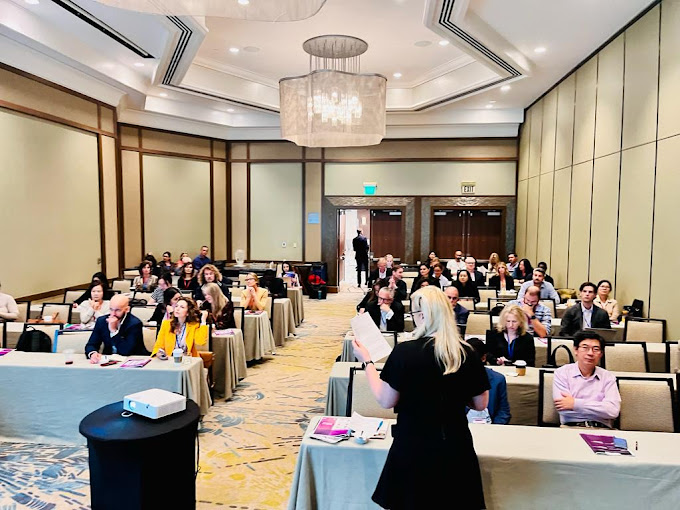Regulatory Pathways Discussed at Drug Development Conferences

Drug development is a complex and highly regulated process that requires careful navigation of various regulatory pathways. Drug development conferences serve as critical platforms where industry professionals, researchers, and regulatory authorities gather to discuss these pathways and share insights. These conferences, organized with precision by pharma event management experts, ensure that participants gain the latest knowledge and foster collaborations that drive the industry forward.
The Importance of Drug Development Conferences
Drug development conferences play a pivotal role in the pharmaceutical industry. They provide a platform for presenting cutting-edge research, discussing regulatory updates, and exploring new technologies that can enhance the drug development process. These events also facilitate networking, allowing professionals from various sectors of the pharmaceutical industry to connect, share experiences, and form strategic partnerships.
The primary goal of these conferences is to advance the field by sharing best practices and fostering innovation. Topics such as regulatory compliance, clinical trials, drug approval processes, and post-market surveillance are commonly discussed. These discussions are crucial for identifying new opportunities, addressing challenges, and developing strategies that improve the overall efficiency and success of drug development.
Key Regulatory Pathways Highlighted at Drug Development Conferences
Several key regulatory pathways are typically highlighted at drug development conferences. These include pathways for expedited drug approval, orphan drug designation, biosimilar approval, and post-market surveillance requirements.
Expedited Drug Approval Pathways
Expedited drug approval pathways are designed to accelerate the development and approval of drugs that address unmet medical needs. At drug development conferences, experts discuss various expedited pathways, such as Fast Track, Breakthrough Therapy, Accelerated Approval, and Priority Review.
Fast Track:
This designation is granted to drugs that treat serious conditions and fill an unmet medical need. It facilitates more frequent interactions with the FDA and allows for a rolling review of the drug application.
Breakthrough Therapy:
Drugs that show substantial improvement over existing therapies for serious conditions can receive Breakthrough Therapy designation. This pathway includes all Fast Track features and offers intensive guidance from the FDA.
Accelerated Approval:
This pathway allows for earlier approval of drugs that treat serious conditions and provide a meaningful advantage over existing treatments based on a surrogate endpoint. Post-marketing studies are required to confirm the clinical benefit.
Priority Review:
This designation shortens the FDA review period from 10 months to 6 months for drugs that offer significant improvements in treatment, diagnosis, or prevention of serious conditions.
Orphan Drug Designation
Orphan drug designation is granted to drugs that treat rare diseases, affecting fewer than 200,000 people in the United States. At drug development conferences, experts discuss the benefits of this designation, such as tax credits, user fee waivers, and market exclusivity.
Orphan drug designation incentivizes pharmaceutical companies to develop treatments for rare diseases that might not be profitable otherwise. The designation provides seven years of market exclusivity upon approval, during which time no similar drug can be approved for the same indication. This encourages investment in research and development for rare conditions, leading to innovative treatments that address significant unmet medical needs.
Biosimilar Approval Pathways
Biosimilars are biological products that are highly similar to an already FDA-approved biologic, known as the reference product. At drug development conferences, experts discuss the regulatory pathways for biosimilar approval, which involve demonstrating bio-similarity through analytical studies, animal studies, and clinical trials.
The Biologics Price Competition and Innovation Act (BPCIA) established an abbreviated pathway for biosimilar approval aimed at increasing market competition and reducing healthcare costs. This pathway requires a robust analytical comparison to ensure that the biosimilar is highly similar to the reference product, with no clinically meaningful differences in safety, purity, and potency. Experts discuss the challenges and strategies for navigating this pathway, including the importance of robust scientific evidence and regulatory compliance.
Post-Market Surveillance Requirements
Post-market surveillance is crucial for monitoring the safety and effectiveness of drugs after they have been approved and marketed. At drug development conferences, experts discuss the regulatory requirements for post-market surveillance, including adverse event reporting, risk management plans, and periodic safety update reports (PSURs).
Regulatory authorities require pharmaceutical companies to continuously monitor their products and report any adverse events or safety concerns. Risk management plans outline the strategies for identifying, assessing, and mitigating risks associated with the drug. PSURs provide a comprehensive analysis of the drug’s safety profile, including an evaluation of any new risks or changes in the risk-benefit balance. These requirements ensure that any potential issues are identified and addressed promptly, maintaining the safety and efficacy of the drug throughout its lifecycle.
The Role of Pharma Event Management
Organizing successful drug development conferences requires meticulous planning and execution. Pharma event management experts play a crucial role in this process, handling everything from venue selection and logistics to marketing and attendee engagement. Their expertise ensures that these events are well-organized and deliver maximum value to participants.
Pharma event management professionals collaborate closely with sponsors, exhibitors, and speakers to create a comprehensive agenda that addresses the most pressing issues and trends in drug development. They also facilitate networking opportunities, enabling attendees to connect, share knowledge, and establish partnerships. By managing the logistical aspects of these events, these professionals allow industry participants to focus on the substantive content and outcomes of the conferences.
Case Studies: Real-World Impact of Drug Development Conferences
Several real-world case studies presented at drug development conferences illustrate the tangible impact these events can have. For instance, a recent conference facilitated a partnership between a pharmaceutical company and a regulatory consultancy to navigate the complex requirements of the Breakthrough Therapy designation. This collaboration led to the expedited approval of a novel treatment for a serious condition, significantly improving patient outcomes.
Another example involved a collaboration between clinical researchers and a pharmaceutical manufacturer to develop a biosimilar for a high-cost biologic. The initial findings were presented at a conference, attracting interest from other industry players and resulting in additional funding and support. This partnership advanced the research from concept to implementation, demonstrating the power of collaboration fostered by these events.
Future Directions for Drug Development Conferences
Looking ahead, drug development conferences are poised to evolve with the industry. One significant trend is the increasing incorporation of virtual and hybrid formats, allowing for greater global participation. These formats make it possible for researchers and professionals from around the world to attend and contribute, regardless of geographic constraints.
Emerging topics likely to feature prominently in future conferences include the use of advanced analytics for drug development optimization, the integration of digital health technologies, and the adoption of personalized medicine approaches. As these technologies and practices develop, drug development conferences will continue to be critical platforms for disseminating knowledge and driving innovation.
Conclusion
Drug development conferences are essential for advancing the efficiency and effectiveness of pharmaceutical research and development. These events provide a collaborative environment where innovative strategies and regulatory pathways are showcased, discussed, and implemented. The involvement of pharma event management ensures that these conferences are well-organized and impactful, offering maximum value to all participants. As the pharmaceutical industry continues to evolve, these conferences will remain vital for fostering innovation, collaboration, and the adoption of new technologies and best practices.
Frequently Asked Questions
What are the main goals of drug development conferences?
The main goals are to share the latest research findings, discuss regulatory updates, explore new technologies, and facilitate collaboration among industry professionals.
How do expedited drug approval pathways benefit drug development?
Expedited pathways such as Fast Track, Breakthrough Therapy, Accelerated Approval, and Priority Review accelerate the development and approval of drugs that address unmet medical needs.
What is the significance of orphan drug designation?
Orphan drug designation provides incentives such as tax credits, user fee waivers, and market exclusivity to encourage the development of treatments for rare diseases.
How are biosimilars approved?
Biosimilars are approved through an abbreviated pathway that requires demonstrating bio-similarity to an FDA-approved reference product through analytical studies, animal studies, and clinical trials.
Why is post-market surveillance important?
Post-market surveillance ensures the ongoing safety and effectiveness of drugs by monitoring adverse events, implementing risk management plans, and providing periodic safety update reports.
What role do pharma event management professionals play in organizing conferences?
Pharma event management professionals handle logistics, marketing, and organization, ensuring that conferences run smoothly and provide valuable networking and learning opportunities for participants.
What are the benefits of virtual and hybrid conference formats?
Virtual and hybrid formats allow for greater global participation, enabling researchers and professionals from around the world to attend and contribute, regardless of geographic constraints.
What future trends are expected in drug development conferences?
Future trends include the use of advanced analytics for drug development optimization, the integration of digital health technologies, and the adoption of personalized medicine approaches.

